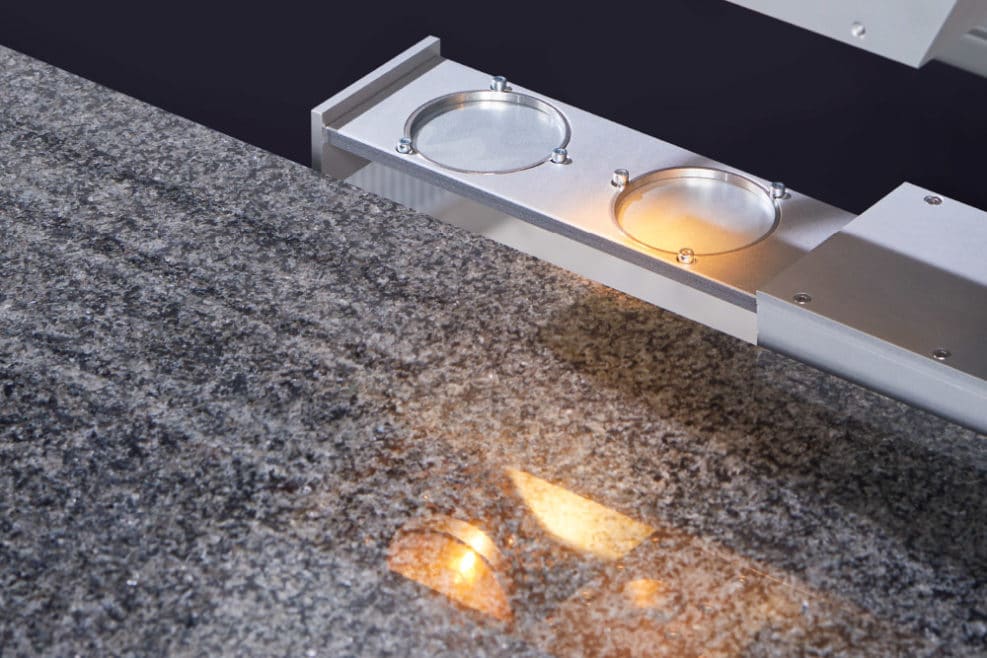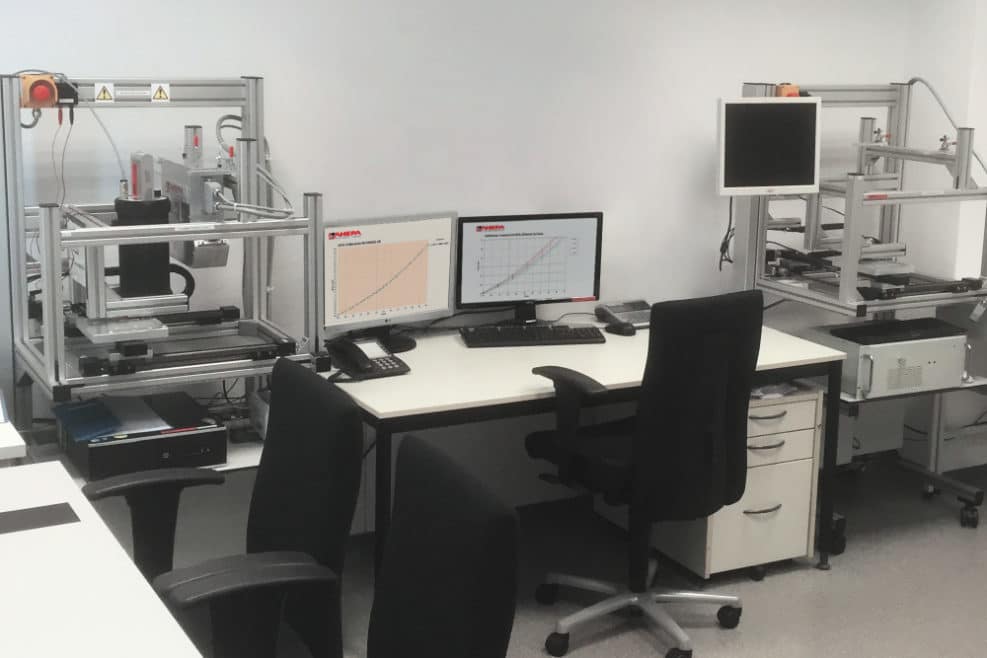OFM
Online Oil Film Measurement
Perfect Surface with Online Oil Film Measurement
OFM 100
Online Oil Film Measurement does not require sampling and immediately provides all the necessary information for evaluating the oiling process.
- Direct, non-contact online oil film measurement for the oil thickness
- Objective criteria for assessing lubrication
- Reliable detection of dry streaks and incorrect oil coverage
- Immediate online warning of deviations in the oiling process
- Assessment of the system condition through statistical evaluations
- Long-term archiving of quality data for TQM
- Avoidance of customer complaints
Download
Your contact partner
Dipl.-Ing. Jens Harre
Technical Sales Manager
Dipl.-Wirt.Ing. Ansgar Berlekamp
Technical Sales Manager
The benefits
Robust
Consistently designed to meet customer requirements:
- Non-contact measurement with a considerable distance to the measuring object
- Compensation for age-related changes of the light source
- Fully automatic detection and reporting of sensor faults by the validation unit
Versatile
OFM Oil Film Measurement is used in steel, aluminum and automotive production. Users in the rolling mill, finishing and inspection, and in the press use the measurement results to document quality and optimize their processes.
High customer benefit
The quick detection of lubrication errors with immediate online warning reduces the rate of customer complaints and defective production.
Statistical evaluations allow an objective assessment of the state of the plant or product.
Proven
The infrared spectroscopy used has been a powerful method for chemical analysis of organic substances for decades.
For many years, users have successfully used our reliable and continuously developed systems.
01

Customer Specific Quality Configurations
The measurement results of the total area, target values, and tolerances are displayed using the OFM client software. The software can be explicitly configured by the customer to display the necessary data for their process. The automatic evaluation categorizes the area as insufficient, correct, or excessive lubrication by percent. It also enables a quick overall condition of the coil as good, caution, or bad through a traffic light display.
02

OFM Validation Unit
The validation unit is attached outside of the sheet metal run. A compressed air-operated drawer contains a validation sample for both the zero value and a reference value.
The OFM sensors are checked regularly, including the degree of soiling of their optical windows. The validation results are visualized, evaluated, and saved. As soon as the validation limits are exceeded, a warning message is issued, indicating the optical windows of the OFM sensors should be cleaned.
03

OFM Calibrations
Depending on the surface coating and texture, the sheet metal surface has typical reflective properties and requires specific calibration for quantitative measurement. In our calibration laboratory, we create high accurate calibrations for our systems using precise scales and calibration stations with many years of experience and extensive expertise. These can be transferred to all OFM sensors and can be implemented at any time.
Ensuring High Quality: The OFM 100 System
Two traversing units move the OFM sensors cyclically on both sides over the oiled sheet metal surface. The oil and position data are recorded in a central evaluation unit and processed for a graphic representation of the oil distribution of the entire coil. When a spray oil machine is used, a roller unit is required after the oiler to form the misted oil droplets into a uniform film.
Measuring Principle of Non-Contact Oil Film Measurement
The oiled sheet metal surface is illuminated by two spectrally broadband light sources, specific unique halogen lamps. The part of the light diffusely reflected perpendicularly from the metal surface passes through the oil film twice. The oil causes specific wavelengths in the mid-infrared range (MIR) of the electromagnetic spectrum to experience absorption dependent on the oil layer thickness. Only a few selected wavelengths are analyzed in the MIR using a photometer. An evaluation based on Lambert-Beer‘s law results in the weight per unit area of the oil layer.







